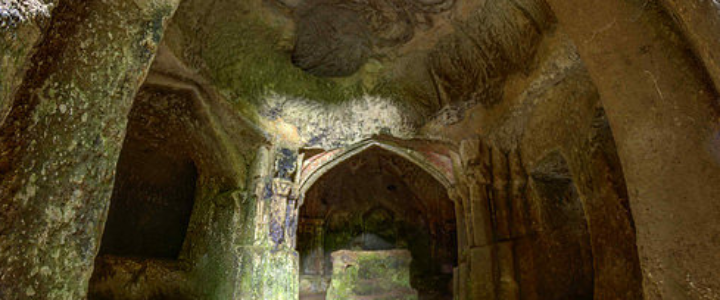
The Hermitage of Poggio Conte (also known as St. Columban) was near the customs between the Pontifical Territories and Tuscany. The first written traces of the site were founded in an ancient map of 1027 but, most likely, it is during the XII-XIII centuries that the hermitage was embellished architecturally and pictorially.
To get to the hermitage of Poggio Conte You must follow a path that runs along the river Fiora and, after passing of Rigagnoli and a gate, you go into the woods through wooden steps, which lead to a gorge. On the bottom appears a tufaceous wall and a waterfall, which makes the place look unreal. On the left there are the Church and the House of the Hermitage, probably inhabited by a single monk.
The interior of the Sacred Building, can be accessed by a portal overflowed by a hole, and is made up of frescoed walls with floral and geometrical motifs. Unusual decorations for a Christian church.
It is for this reason that the scholars believe that the site of the hermitage of Poggio Conte, at least at the beginning of its history, in the twelfth century, belonged to the order of the Templars. Not far from here is the Via Clodia, an ancient Roman road that ended in Saturnia, which, like all the routes of communication, had to be controlled and protected from the order.
In the twelve niches there were frescoes of the apostles portrayed in various attitudes. In 1964 they were stolen six, the remaining are exposed to the Civic Museum of Ischia di Castro (Vt).
www.passaggilenti.com/l-eremo-di-poggio-conte-trekking-e-storia/





 Home
Home Home
Home